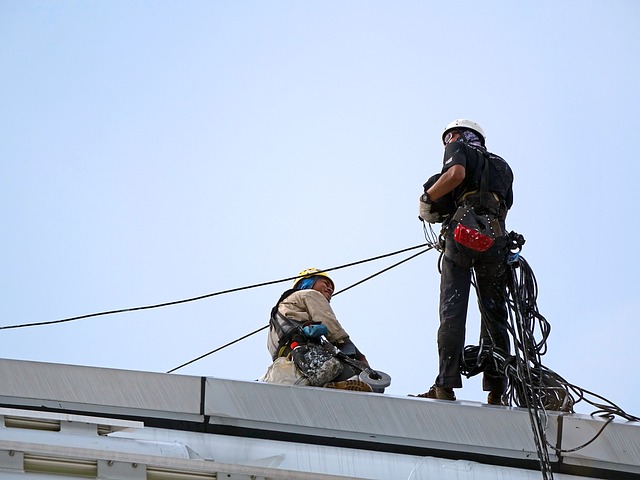
There are a wide variety of different safety harnesses available on the market, and they can be used in a number of different ways depending on what kind of attachments you’re using and what environment you’re working in.
On the whole, the primary function of a safety harness is to prevent the wearer from falling from a dangerous height. By wearing the harness, comprised of a system of straps and restraints, the risk of injury caused by a potential fall is greatly reduced.
If you work in a job that requires regularly working at great heights, the potential dangers and accidents that could occur at height are one of the biggest causes of injury and fatality in the workplace.
Wearing a harness is the best way to keep yourself safe, but how do you know when you should be wearing one?
When Should You Wear a Safety Harness?
When Working at Height
Fall arrest and restraint lanyards are the perfect equipment to use with harnesses when working at height. They work by either catching you when you fall (arrest) or preventing the risk of falling altogether by preventing you from moving into areas of risk (restraint).
These are only two ways that harnesses can protect you when you’re working at height. If you’d like to get a better idea of the different ways a harness could be utilised to ensure personnel safety, why not browse our wide selection of harnesses, lanyards, anchor points, and more!
Browse Safety Harnesses
When There’s a Risk of Falling
When you’re not working at height, the risk of falling from a smaller drop seems almost insignificant. Surely it would be a waste of time to spend all that effort setting up the harness and anchoring systems, all for a potential fall that wouldn’t even be that dangerous… right?
Not necessarily. Even the smallest fall could be potentially life-threatening. Falling from a seemingly low height and landing awkwardly could result in broken bones, nerve damage, pulled muscles, or worse. Always wear a harness if there’s a risk of fall, no matter how low it is.
When Is It Legally Required to Wear One?
There are a lot of laws and regulations around safety in the workplace, especially when it comes to working at height.
There are a lot of factors that have to be taken into consideration when determining potential fall hazards at a worksite. No two work sites will ever be the same, but it is generally accepted that protection must be provided if there is an unprotected edge with a potential fall of 6ft or higher. The rules vary slightly for different scenarios such as scaffold workers or steelworkers.
If you’re looking for more specific information and how the laws pertain to you or your situation specifically, check out the PDF guide on working at height from the Health and Safety Executive (HSE).
HSE Working at Height Guide
Always ensure you’re properly educated on both the legal requirements for you to be working safely and what precautions you can take to keep yourself safe every day.
All of the above information perfectly encapsulates the many potential dangers of working at height, and why it’s so important to wear a harness. Remember to always check your harness and other equipment carefully before starting work, and check it EVERY time.
Inspect carefully for signs of wear and tear, fraying, or damaged buckles. It’s also important to make sure that your anchoring point is equally stable and secure, and that the lanyards are all attached and adjusted appropriately.
With the risks associated with falling from height, you can never be too careful. Always exercise caution. If you have any questions about harness safety or what products would be right for keeping YOU safe, reach out and contact us and we’ll do everything we can to help.
Contact Us

